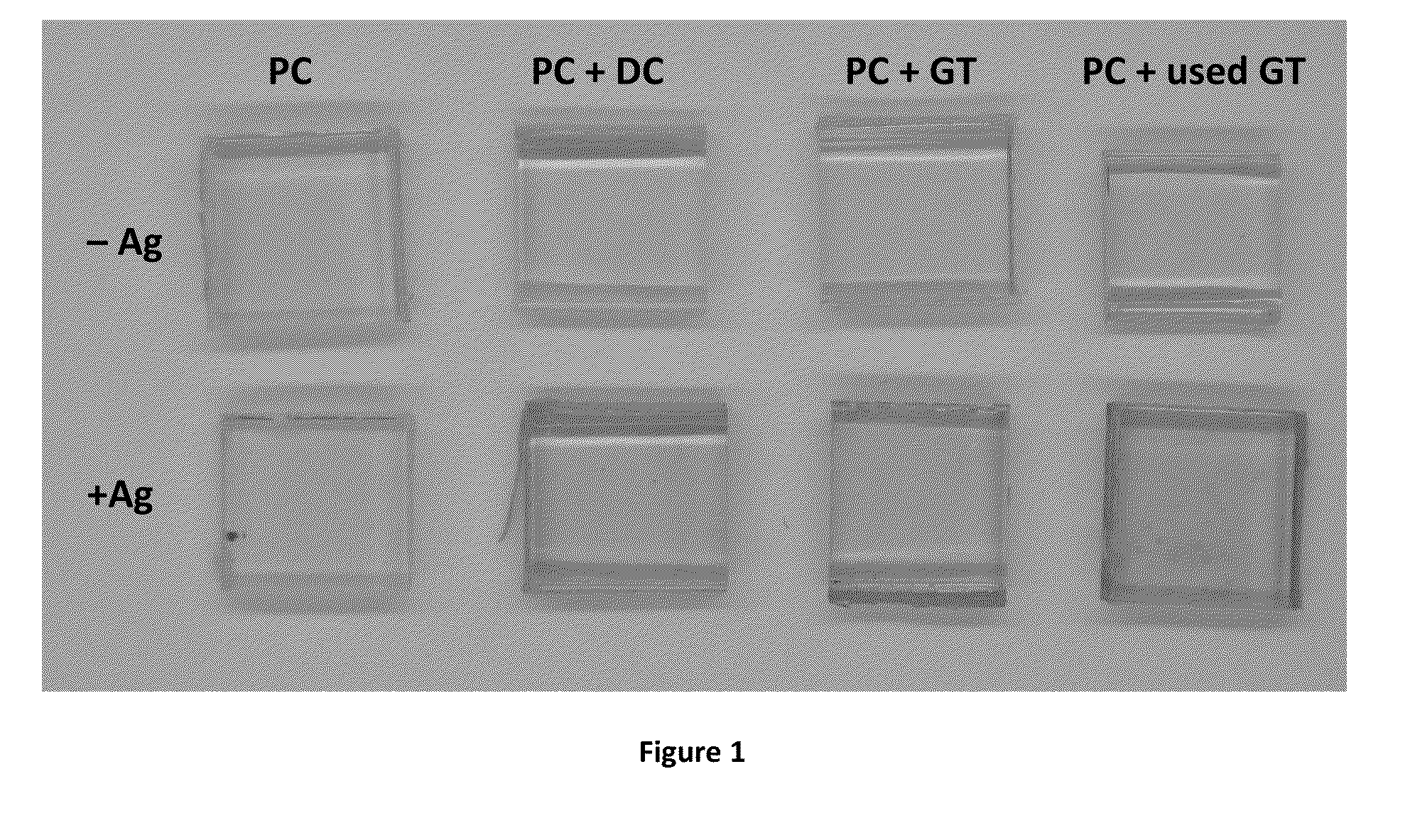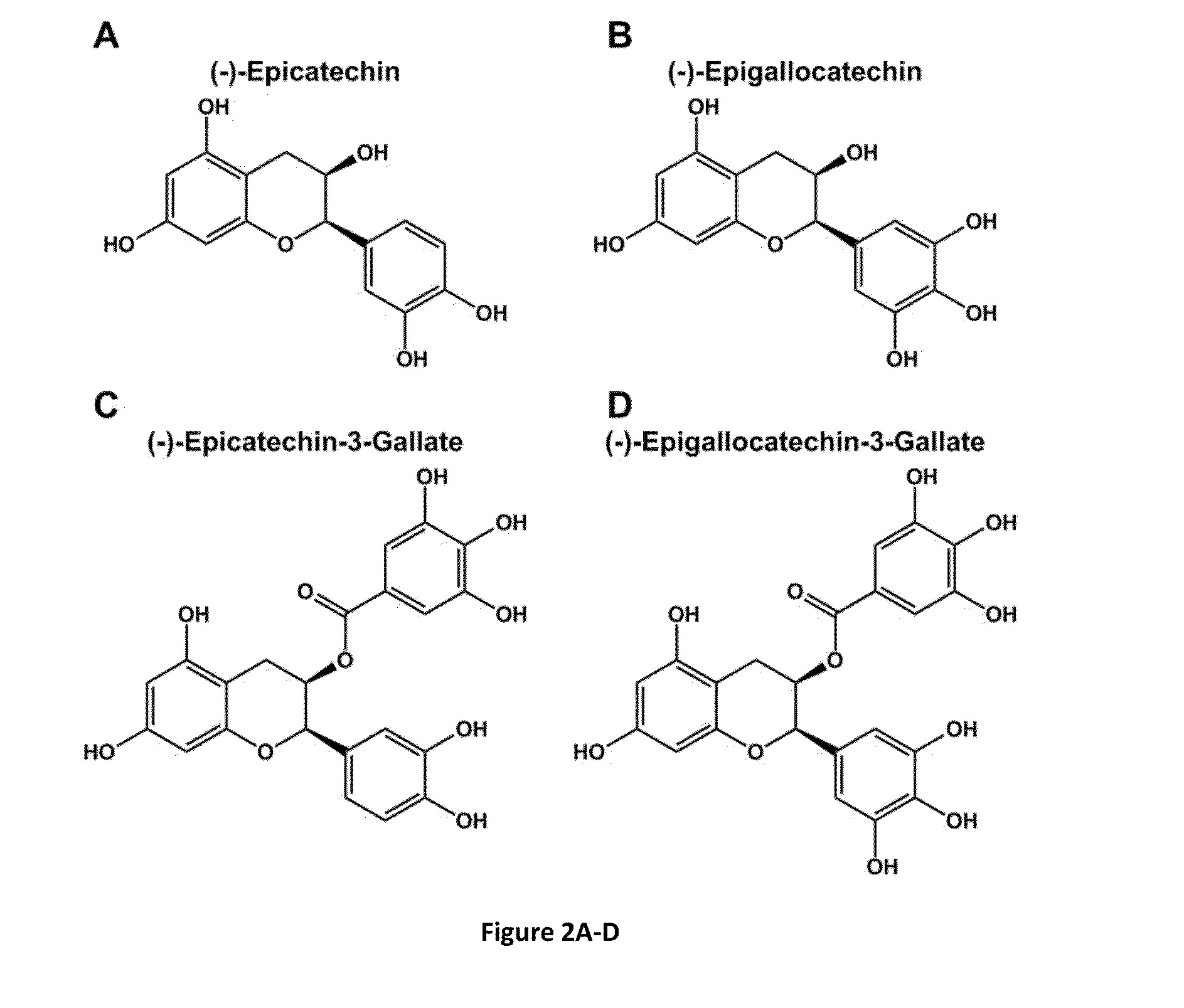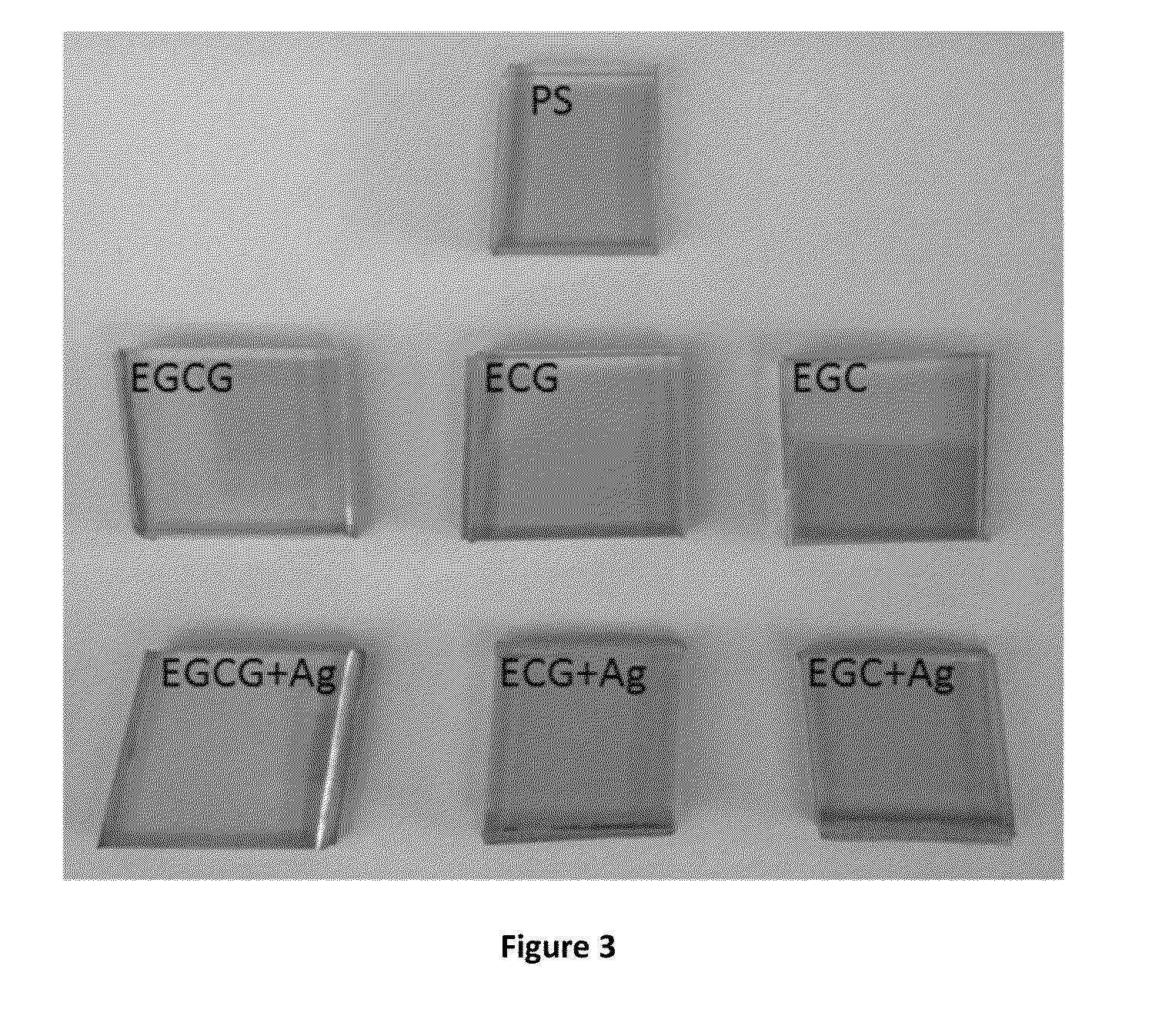Phenolic Coatings and Methods of Making and Using Same
a technology of phenolic coatings and phenolic compounds, applied in chemical/physical processes, plant/algae/fungi/lichens ingredients, ion exchange, etc., can solve the problems of limited substrate size/shape, limited application prospects, and limited practical use of conventional methods, etc., to achieve easy functionalization, and reduce the effect of oxidative stress
- Summary
- Abstract
- Description
- Claims
- Application Information
AI Technical Summary
Benefits of technology
Problems solved by technology
Method used
Image
Examples
example 1
Surface Modification Through Polyphenols from Green Tea and Dark Chocolate Extracts Under Mildly-Basic, Saline, Aqueous Conditions
[0135]Crude extracts of green tea (GT) and dark chocolate (DC) were prepared from raw food products (Table 1) using methods known to the art. The resultant extracts, in solutions buffered at pH 7.8 with 100 mM bicine, further supplemented with 600 mM NaCl, resulted in adherent coating depositions on polycarbonate substrates following 4 h exposure at room temperature with mild agitation. The resultant coatings were confirmed through X-ray photoelectron spectroscopy, as seen by altered carbon-to-oxygen (C / O) ratios. Additionally, the resultant materials, once exposed to 100 mM AgNO3 for 24 h, were able to metallize silver.
TABLE 1Elemental composition of polycarbonate (PC) modifiedwith dark chocolate (DC), green tea (GT), and usedgreen tea (used GT) extract, followed by incubationin silver nitrate (Ag), as determined by XPS.Elemental CompositionSurfaceCONAgP...
example 2
Pyrogallol Coating Deposition Under Mildly-Basic, Saline, Aqueous Conditions
[0141]Pyrogallol (PG, FIG. 4) coating deposition under mildly-basic, saline, aqueous condition was achieved on a variety of substrates. Pyrogallol is a more cost-effective phenolic compound to use and obtain, as compared to many other phenols and polyphenols. The dip coating strategy was performed by incubating the choice substrate in a 0.1 to 2.0 mg / mL solution of pyrogallol, buffered at pH 7.8 with 100 mM bicine, further supplemented with 600 mM NaCl to adjust ionic strength. The incubation was performed at room temperature with mild agitation for duration of 0.5 h to 24 h.
[0142]To date, substrates made of the following materials have been successfully modified with Pyrogallol according to the present invention: Polycarbonate (PC), Polysulfone (PS), Polyisoprene (PI), Polytetrafluoroethylene (PTFE), Poly(ether ether ketone) (PEEK), Polystyrene, Silicone rubber (SiR), Titanium dioxide (TiO2), Gold (Au), and...
example 3
Electroless Metallization of Silver on Surfaces Via Pyrogallol
[0145]Surfaces modified with pyrogallol are capable of reducing ionic silver (Ag+) from aqueous silver nitrate solutions. By “electroless”, we mean an otherwise spontaneous process not requiring the use of an applied electric field to induce metallic coating formation. As-prepared substrates coated with pyrogallol are immersed in 100 mM AgNO3 for 24 at room temperature with mild agitation. Upon visual inspection, polycarbonate substrates modified with pyrogallol and AgNO3 appear dark amber in color (FIG. 8). Through scanning electron microscopy (SEM), metallic nanoparticle formation is observed on polytetrafluoroethylene substrates modified with pyrogallol and AgNO3 (FIG. 9). Surface compositional analysis through XPS indicated incorporation of silver into the coating (FIG. 10 and Table 2), as seen by the emergence of Ag3d peaks.
TABLE 2Elemental composition of polycarbonate (PC) modified with pyrogallol(PG) and silver nit...
PUM
| Property | Measurement | Unit |
|---|---|---|
| contact angles | aaaaa | aaaaa |
| water contact angles | aaaaa | aaaaa |
| pH | aaaaa | aaaaa |
Abstract
Description
Claims
Application Information
 Login to View More
Login to View More - R&D
- Intellectual Property
- Life Sciences
- Materials
- Tech Scout
- Unparalleled Data Quality
- Higher Quality Content
- 60% Fewer Hallucinations
Browse by: Latest US Patents, China's latest patents, Technical Efficacy Thesaurus, Application Domain, Technology Topic, Popular Technical Reports.
© 2025 PatSnap. All rights reserved.Legal|Privacy policy|Modern Slavery Act Transparency Statement|Sitemap|About US| Contact US: help@patsnap.com



